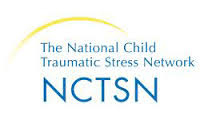 The National Child Traumatic Stress Network Domestic Violence Collaborative Group developed a helpful series of 10 fact sheets that get to the heart of the experiences and needs of children exposed to domestic violence and their families, offering education in support of their resilience and recovery
The National Child Traumatic Stress Network Domestic Violence Collaborative Group developed a helpful series of 10 fact sheets that get to the heart of the experiences and needs of children exposed to domestic violence and their families, offering education in support of their resilience and recovery
 ACESTooHigh is a news site that reports on research about adverse childhood experiences, including developments in epidemiology, neurobiology, and the biomedical and epigenetic consequences of toxic stress.
ACESTooHigh is a news site that reports on research about adverse childhood experiences, including developments in epidemiology, neurobiology, and the biomedical and epigenetic consequences of toxic stress.
Healthy Moms, Happy Babies (Second Edition): A Train the Trainers Curriculum on Domestic Violence, Reproductive Coercion and Children Exposed Kit was created to support home visitation programs to be equipped to help women and children living in homes with domestic violence. This newly updated research-informed curriculum includes PowerPoint presentations with speaker’s notes, discussion questions, video clips, role-plays, and other exercises and a supporting bibliography
In this TED Talk, Pediatrician Nadine Burke Harris explains that the repeated stress of abuse, neglect and parents struggling with mental health or substance abuse issues has real, tangible effects on the development of the brain. It’s an impassioned plea for pediatric medicine to confront the prevention and treatment of trauma, head-on.
The Power of Resilience is TED talk by Dr. Sam Goldstein about how his encounter with a child who faced adversity changed his understanding of resilience and his approach to services.
 The Child Welfare Information Gateway promotes the safety, permanency, and well-being of children, youth, and families by connecting child welfare, adoption, and related professionals as well as the public to information, resources, and tools covering topics on child welfare, child abuse and neglect, out-of-home care, adoption, and more.
The Child Welfare Information Gateway promotes the safety, permanency, and well-being of children, youth, and families by connecting child welfare, adoption, and related professionals as well as the public to information, resources, and tools covering topics on child welfare, child abuse and neglect, out-of-home care, adoption, and more.
Coping with Early Adversity and its Mitigating Effects is a video from the Center for Advanced Studies in Child Welfare that features experts discussing the process that results in resilience in young children and the factors that can be put in place to bolster resiliency.









